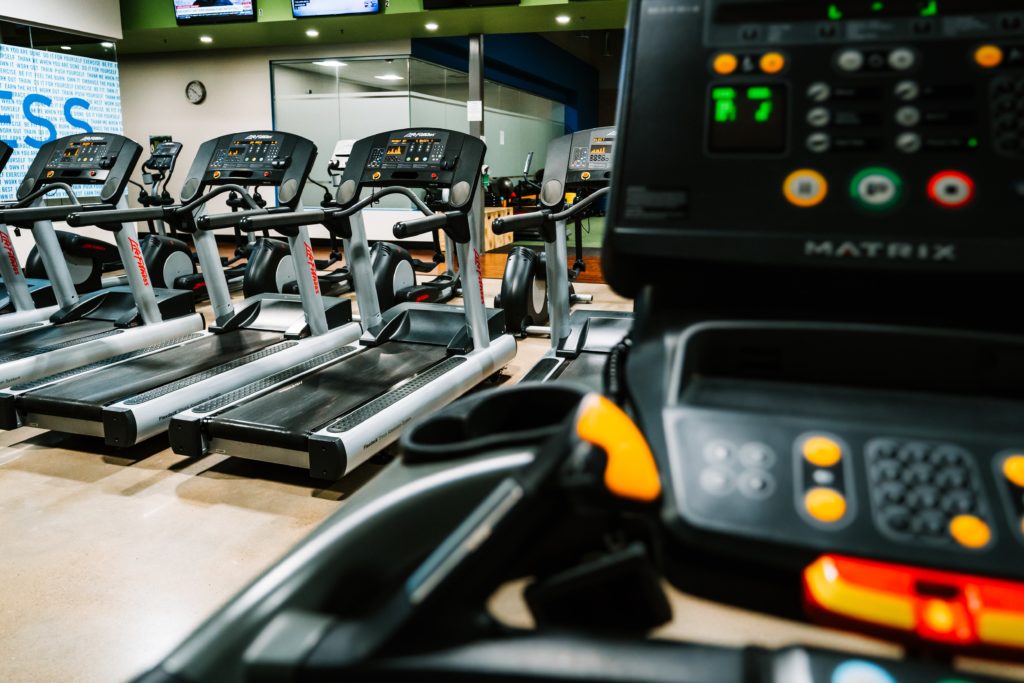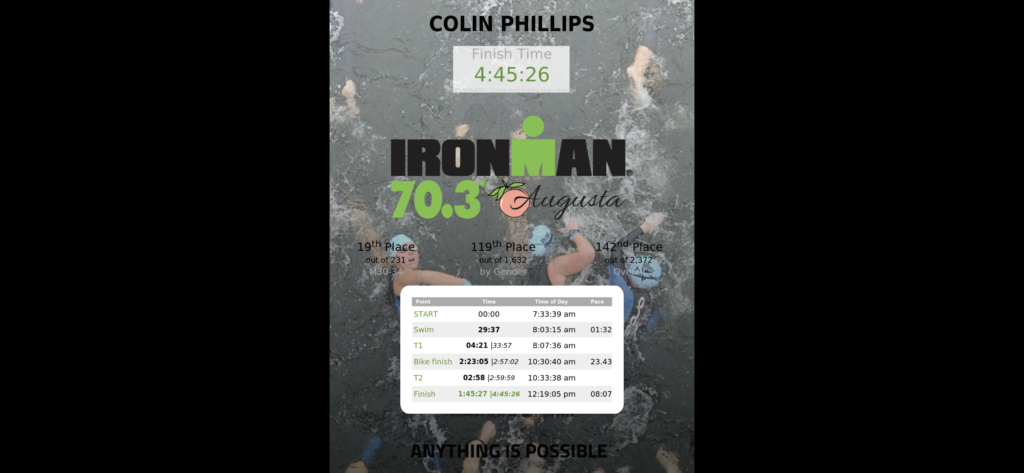
Making the Best of Indoor Running – Treadmill Running Tips
Making the Best of Indoor Running - Treadmill Running Tips
As many of us are stuck indoors right now due to COVID-19 and the subsequent lock-downs, I wanted to share a few of my treadmill running tips. If you have any additional treadmill running tips to share, I’d love to read them in the comments below.
Treadmill Basics
- Put the treadmill at a 1% incline to emulate a more realistic outdoor running experience when training with outdoor pace zones.
- The 1-2% incline recommended by most coaches is to overcome the lack of air resistance. For this reason, it psychologically doesn’t become a factor until running at speeds of 7 min/miles or faster and truly doesn’t impact training unless controlling intensity with zones set outdoors at paces above 7 min/mile.
- Some athletes may find the incline just feels “better” or more natural; this can become more apparent on some models due to belt design.
- Give yourself plenty of time to warm up because running on the treadmill requires slightly different mechanics.
- Start the speed out slow when you start running on the treadmill.
- Ensure you are balanced by rotating your head and looking around, so you don’t fall off if you get distracted by something or someone.
- Ensure you are calm, and you are breathing through your diaphragm. Treadmill running can make some runners nervous and throw them off their normal breathing patterns.
Dealing with Heat Build-up Indoors
- Ensure you are drinking fluid when running on the treadmill.
- Conduct fluid loss testing periodically to gauge intake requirements during treadmill sessions.
- A towel is a useful tool as well to stay cool.
- Soak your towel in cold water and place it in a ziplock bag in your freezer overnight. Remove the towel 15-20 minutes before your run or event and place the towel on the back of your neck to help cool your body. Starting with a lower-body temp will help negate some of the impact of heat on your performance
- Fans are great for moving air across your skin and helping your body to cool down. Recommend placing the fan at your 3 o’clock or 9 o’clock position to maximize airflow over your entire torso, both front and back. This also avoids any tailwind or headwind issues if you find yourself using a military-grade industrial fan like I once did while training on base.
Change it up – Hitting Reverse
- There is extra and novel muscle tension when running on the treadmill. Sometimes, it takes a few training sessions to adjust to the differences of the treadmill.
- Fast walking is a skill that runners and triathletes neglect. A brisk walk helps build hip and ankle mobility while also training for those race times where a runner may need to slow down(late run breaks and aid stations).
- Fast walking takes a different set of muscles that helps injury prevention and injury recovery.
- You don’t need to always run forward on the treadmill. You can go side to side and backward at a slow speed. Changing up directions lets you work on and strengthen muscles in different planes.
Working on the Details
- The treadmill is an excellent opportunity to work on your cadence and mechanics.
- A treadmill + slow-motion video can be a useful tool for collecting information on your running form.
Workout Adaptations
- If you track your workout intervals by distance instead of time, you may find treadmill workouts easier to manage by converting distance to time. For example, US athletes traditionally use a 1600m track but run in a minute per mile splits. However, not all treadmills track distance or even pace this way. Thus a workout may say 4x 400m @ 6:30 min/mile. To convert this, simply convert the min/mile pace to min/km and multiply that by the distance of the interval to get the interval length:
- To convert interval distance to interval time use the equation: time (mins) = distance (km) * time (mins) * 0.621 (mins/km).
- For our example of 4×400 @ 6:30 min/mile convert 6:30 min/mile to min/km. Use decimal format for the minutes; 6:30 = 6.500 min/mile. The equation for min/mile to min/km is 1 min/mile = 0.621 min/km; thus 6.5 min/mile * 0.621 min/km = 4.037 min/km
- Now convert 400m to km given the pace split is in min/km. Thus 400m = 0.400 km. Multiple 0.400 km by 4.037 min/km to cancel out km and leave 1.615 minutes or 1 minute and 37 seconds.
- Final treadmill workout is 4x 1:36 @ 6:30 min/mile.
- The full equation is: time = distance (km) * time (mins) * 0.621 (mins/km)
- To convert min/mile to mile/hour (mph) use the equation: speed (mph) =s 60 (mph) / speed (min/mile).
- For our example of 4×400 @ 6:30 min/mile, we once again convert to decimal format for 6.500 mins/mile. Next, we divide 60.000 mph by 6.500 mins/mile to get 9.231 mph.
- The final treadmill interval set would look like 4x 1:36 min @ 9.2 mph
- You may find it easier to round this to 4x 90 seconds @ 9.2 mph for tracking on your treadmill.
- To convert interval distance to interval time use the equation: time (mins) = distance (km) * time (mins) * 0.621 (mins/km).




I’ve read about the 1% incline, but now I will have to implement
You run by power with a wind model so it isn’t as much as a factor unless you notice that it feels more natural. If you go above 1% you will need to capture your run in the stryd app or on an apple watch so that you can correct the incline for the Stryd.
I’m still trying to figure out how to get me power meter to control zwift instead of my Kickr! I’m a technological Neanderthal
Set your power meter as the “Power Source” and your Kickr as the “Controllable” on the Paired Devices page when setting up the app during login.
Good tips…especially the fan. I find myself overheating indoors on the regular. Luckily I’ve been doing the 1% for my runs!